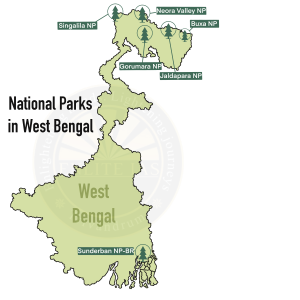Why in the news?
- Estimated population of saltwater crocodiles has shown an uptick in the Sundarban Biosphere reserve compared to last year.
Sundarban Biosphere Reserve
- Location: On the delta of the Ganga, Brahmaputra and Meghna rivers in the Bay of Bengal.
- Include: This Biosphere Reserve includes Sundarban Tiger Reserve, Sundarban National Park (core area), Halliday Island and Lothian Island Wildlife Sanctuaries with Sajnakhali Wildlife Sanctuary forming its buffer area.
- Protection: It is designated as a UNESCO World Heritage site.
- Flora: The vegetation of the area is moist tropical forests, tidal forests and mangroves.
- Fauna: It is home to Royal Bengal Tiger, Estuarine Crocodile, Gangetic Dolphin, Water Monitor Lizard etc.
- Features:
- It is a transboundary delta and mangrove forest lie between Indian and Bangladesh.
- Protection Status Allotted to Sundarbans
- Ramsar Site
- Tiger Reserve
- National Park
- UNESCO World Heritage Site

Saltwater Crocodile
- Features:
- Largest of all Crocodilians.
- It is also called the ‘estuarine crocodile’ and as the name suggests, is typically found in the brackish water of estuaries.
- It can also tolerate saltwater in the oceans and can travel long distances over the open ocean, making use of tidal currents.
- Habitat:
- In India – Sundarbans, Bhitarkanika National Park and the Andaman and Nicobar Islands.
- Around the World – Bangladesh, Malaysia, Indonesia, Brunei, the Philippines, Papua New Guinea, Australia and the Solomon Islands.
- Mangrove forests and Coastal habitats are inhabited.
- Threats: Habitat destruction, fragmentation, and transformation, fishing activities and hunting for crocodile body parts for medicinal purposes.
- Protection Status:
- IUCN List of Threatened Species: Least Concern
- CITES: Appendix I (except the populations of Australia, Indonesia and Papua New Guinea, which are included in Appendix II).
- Wildlife Protection Act, 1972: Schedule I
